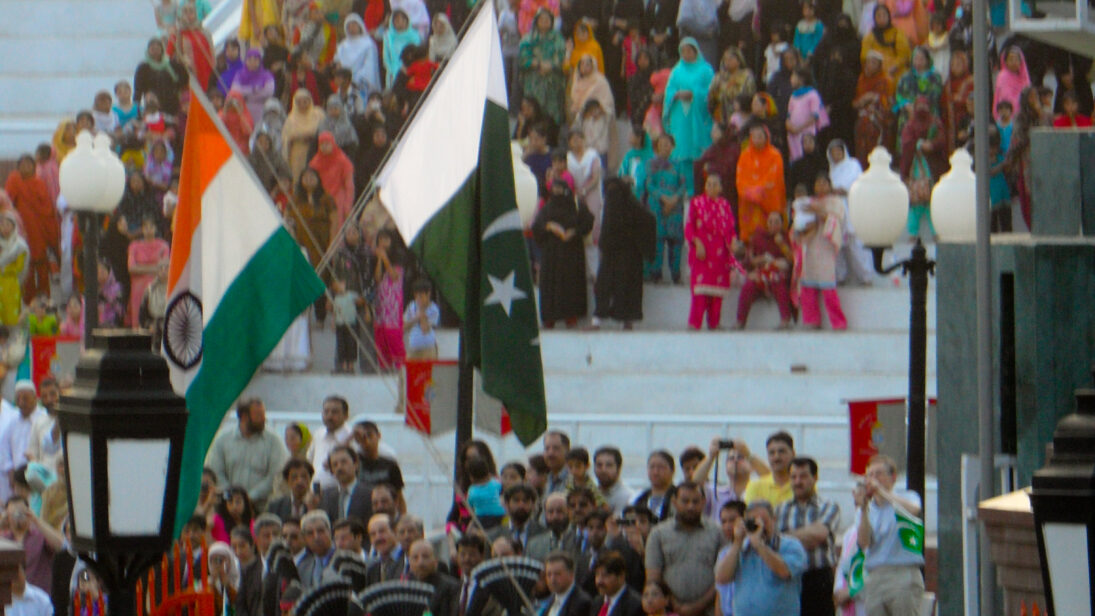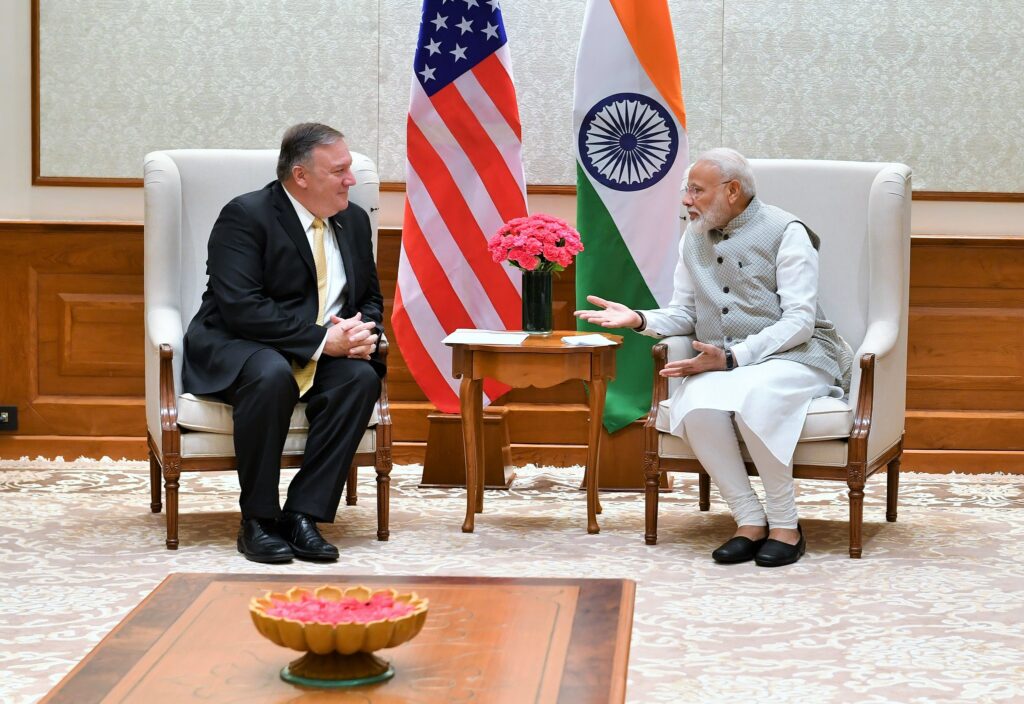
On February 9th, 2022 Lisa Curtis spoke with South Asian Voices Managing Editor Brigitta Schuchert and Associate Editor Isha Gupta on the U.S. role in the Balakot crisis, lessons for future policymakers, and the impact of shifting geopolitical alignments on crisis dynamics in South Asia. Ms. Curtis is a Senior Fellow and the Director of the Indo-Pacific Security Program at the Center for a New American Security. She served as Deputy Assistant to the President and NSC Senior Director for South and Central Asia from 2017-2021 under three successive National Security Advisors. She is a foreign policy and national security expert with over 20 years of service in the U.S. government, including at the NSC, CIA, State Department, and Capitol Hill.
What grade would you give the United States on the role it played in the Balakot crisis? What did the U.S. get right and what could it have done differently in hindsight?
I would give the United States a grade of about seven out of ten. There are several different phases to this crisis to consider. First, there was the terrorist attack in Pulwama on February 14th, 2019, by a Jaish-e-Mohammad (JeM) militant, which killed 40 Indian security forces in a bombing. The second phase came about 12 days later and that was the response by India, the retaliatory strike against a camp in Balakot, Pakistan in Khyber Pakhtunkhwa Province and the dogfight the next day between Indian and Pakistani aircraft. Then, there were the actions the United States took after de-escalation.
I think the one mistake that was made was that immediately following the terror attack statements were made by senior U.S. government officials that were interpreted as giving India a green light for a retaliatory strike against Pakistan. In the future, U.S. officials need to be extremely careful in their statements following a rise in tensions between India and Pakistan of this nature, given the very dangerous implications of escalation due to the fact both have nuclear weapons capabilities.
That was one mistake. However, following the downing of the Indian aircraft, the United States did handle the situation rather well. Senior U.S. officials got on the phone with both sides and worked through a plan to de-escalate and bring down tensions. Then, after the immediate crisis calmed down, the United States pursued an effort at the United Nations to have Masood Azhar, leader of JeM, listed as a designated global terrorist. The United States had been trying to do that for some time and China had blocked the effort. The U.S. put renewed vigor and effort into the process and ultimately was successful. So, I think that was handled well.
The United States should have taken advantage of Imran Khan’s visit to Washington DC in July 2019 to get more action against JeM and LeT. That is something that could have been done differently.
After the crisis, there was also an effort by Pakistan to try to get an international delegation to visit the Line of Control (LoC) to meet with the United Nations Military Observer Group in India and Pakistan, but the United States did not fall for that trap and did not take up Pakistan’s effort and made sure that visit did not happen. Another aspect that the United States handled well in the aftermath was using the Financial Action Task Force (FATF) sanctions gray listing for Pakistan to try to induce Pakistan’s action against Lashkar-e-Taiba (LeT) and JeM, which was a positive step to try to prevent the next crisis from happening. But I think there should have been even more follow-up in ensuring that JeM was shut down. The United States should have taken advantage of Imran Khan’s visit to Washington DC in July 2019 to get more action against JeM and LeT. That is something that could have been done differently.
What lessons do you think the United States learned from the crisis?
One lesson we learned is that India is willing to take greater risks against Pakistan when terrorists strike on its territory. Striking into Pakistani territory in Balakot was a clear departure from the responses we had seen from India in the past. In 2016 there was the limited action where Indian commandos went across the LoC and conducted what they called surgical strikes. Balakot was a departure: India showing willingness to strike deep into Pakistani territory in retaliation for terrorist strikes on its territory.
The other thing that the United States learned was that we needed to have a playbook that we could pull off the shelf. This crisis escalated so quickly. There was the 12 days in between the terrorist attack and India’s airstrikes, but when India retaliated there was the sudden dogfight with Indian and Pakistani jets shooting at one another and that was a major escalation in a very short period. It is important for people in the U.S. government to have thought through a response that can be used quickly and on the fly. So that the response is not something that you have to sit down for long inter-agency meetings and deliberate about. Policymakers need to be able to act very quickly and it is best to have worked through the scenarios when not in crisis mode so that you already have the ideas and the steps that you’re going to take when that crisis hits.

How did deepening U.S.-India and China-Pakistan ties impact crisis dynamics during Balakot? How do you expect these trends will shape future crises? How do you think a more competitive regional environment may impact third party crisis management efforts?
We saw that China sided with Pakistan and was feeding Pakistan information that contributed to some of the escalation. What we see is that China is more willing to use Pakistan for its own purposes, vis-à-vis India. This is something that the United States will have to be very cognizant of going forward. It is not like the 1999 Kargil crisis in which China played a helpful role in defusing tensions. Now, we see China more willing to side with Pakistan and to not be worried about being seen as a neutral, responsible player and instead looking to see what it can get out of the crisis. I would say China plays a much less responsible role when it comes to India-Pakistan crises right now.
What we see is that China is more willing to use Pakistan for its own purposes, vis-à-vis India. This is something that the United States will have to be very cognizant of going forward.
Even though U.S.-India relations have obviously improved dramatically over the last 20 years, Pakistan still looks to the United States to help defuse India-Pakistan crises, and the Balakot crisis was no exception. I think Pakistan recognizes that even though the United States has improved its relations with India, that the United States is still the country that is best placed to help defuse tensions once they start escalating. I think Pakistan also recognizes the United States has some limited leverage with India that China does not have. Pakistan still looks to the U.S. as a relatively objective facilitator in helping to reduce tensions between the two countries.
I think it is also important that the United States continually monitor and maintain a strong grasp of the situation inside Indian Administered Kashmir as well as understand what’s happening with the militant groups inside Pakistan. We should not wait for a crisis to try to get up to speed on what’s happening in a very volatile area. Now that the Taliban is in power in Afghanistan, it is even more important that we understand what is happening with the militant groups inside Pakistan, because one assumes that the Taliban being in power next door in Afghanistan will inspire Pakistan-based militant groups and that they will feel emboldened by the fact that Taliban was able to quickly ascend to power in Afghanistan.
As someone who had a direct role in U.S. crisis response efforts, are there any personal reflections you would like to share about your experience during and after the crisis? What advice would you give to U.S. policymakers faced with a similar challenge in the future?
I would say that the United States is good at galvanizing a response to a crisis. We’re pretty good at hunkering down, communicating with both sides, and figuring out the way to walk back from the crisis. I think people fully understand the dangers of escalation between India and Pakistan. What we’re not great at is following up after the crisis dies down to make sure that we can try to prevent the next one. After any terrorist attack on Indian territory conducted by Pakistan-based militant groups, there is always U.S. motivation to convince Pakistan to crack down on terrorism and there are steps taken. But once the situation calms down, everything goes back to normal and the United States government goes back to thinking that, “well, Pakistan is always going to have militants, there’s not much we can do” and moves on. That approach does not really deal with the core issue. Something that I have observed watching this region over 25 years is that we are not very good at changing the conflict dynamics and changing the context of the conflict. We only really excel when it comes to calming down crisis situations.
I would tell current and future U.S. policymakers to not be lulled into complacency—to learn about the Kashmir dispute, understand the historic dynamics between the two countries, study the mistakes that the United States has made so that you don’t repeat them, and don’t be naive about the U.S. ability to resolve the dispute between the two countries.
We should think about using the crisis to try to change the conflict dynamics—getting Pakistan to crack down on militancy and getting India to be more transparent with the situation in Kashmir. It is obviously difficult. Both sides have dug into their positions over many, many years. We should try to effect changes in both sides’ positions but at the same time be humble about our ability to succeed in doing so.
I would tell current and future U.S. policymakers to not be lulled into complacency—to learn about the Kashmir dispute, understand the historic dynamics between the two countries, study the mistakes that the United States has made so that you don’t repeat them, and don’t be naive about the U.S. ability to resolve the dispute between the two countries. Get smart on the issues, so that you can manage tensions once they escalate. Don’t overestimate your ability to be able to change the conflict dynamics, but certainly be prepared to manage tensions once they inevitably escalate.
Editor’s Note: This article is part of a four-part series featuring reflections from senior analysts and policymakers in the United States, India, Pakistan, and China on the lessons learned from the 2019 Pulwama/Balakot Crisis. Read the full series here.
***
Image 1: Daniel Haupstein via Wikimedia Commons
Image 2: MEA Photography via Flickr


